| Please access the following URL if you want to secure using SSL. All pages in the site will be secure pages. |
| https://secure02.blue.shared-server.net/www.fish-food.co.jp/message english 11.2020.html |
Welcome to FISH FOOD TIMES
Nov. 2020 issue No.203


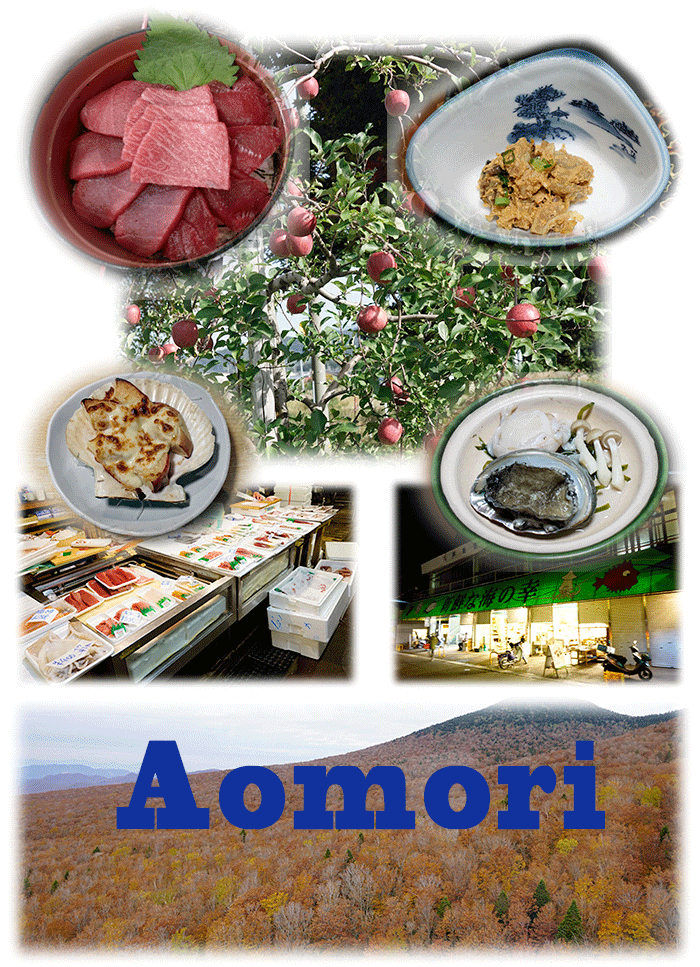
Fish in Aomori
Go to Aomori
In the November issue of "Overseas Fish Circumstances," which has become an annual event recently, the new coronavirus prevented travel abroad. Therefore, I decided to write "Fish situation in a certain area in Japan" as an alternative. The place I chose this time was Aomori prefecture, which I remember visiting Oirase when I was a student almost half a century ago, but had never been to a place to stay.
It is a remote place next to Hokkaido from Fukuoka prefecture where I live, and although I have visited Hokkaido many times, I have not had a chance to go to Aomori. So I wanted to use the Go to campaign to visit the unknown Aomori and learn about the fish situation.
The first thing I went to was Oma, which may sound like a groupie, but is famous for its natural bluefin tuna. For the time being, I wanted to know what exactly Oma was like. Arrival at Aomori Airport from Fukuoka via Haneda is around 14:30 at the earliest, and it seems that it will be around 18:00 even if I hurry from the airport by car, so the Shimofuro in Kazamaura Village, which is close to that, I decided to stay at a hot spring hotel.
Shimokita-gun Kazamaura Village Shimofuro hot spring hotel fish cuisine
The hot springs in Shimofuro Onsen were so white and muddy that the bottom of the bathtub could not be seen at all. As for the food at the ryokan, I had reserved a "abalone / scallop grilled seafood lip-smacking treats plan" to enjoy Aomori's fish dishes. One of the main dishes is the image below.
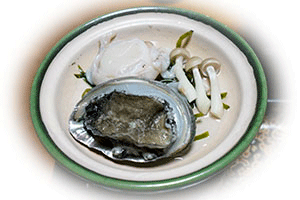
It was an Ezo abalone that was still moving, as if it were the local area of Ezo. When this plate is lit, it becomes "abalone dance grill". This Ezo abalone is a northern subspecies of black abalone that was originally in a colder region, but its habitat has expanded due to proliferation and transplantation, and it has become the name of Ezo.
Ezo abalone has strong fertility and is cultivated more than black abalone and red abalone, making it the largest distribution volume of abalone in Japan. There was also a time when South Korea began to be actively cultivated, and South Korea accounted for 80% of the world's production. However, China's production has also increased dramatically, and it seems that China is now dominating the market for farmed abalone.
On the same plate as the Ezo abalone is the "Mutsu Bay scallop," which is now famous all over the country. The production of scallops is second only to Hokkaido in Japan, and Mutsu Bay scallops are especially famous as a major producer of semi-adult scallops called baby scallops.
At FISH FOOD TIMES, No. 43 baby scallop cold shabu (July 2007) picked up the fun of baby scallops as a product. After that, I think that it has grown into a standard product that is now indispensable in the fish section of supermarkets. Production of scallops cultivated in Mutsu Bay has been strong for the past few years and may fall below the previous year's level in 2020, but prices are unlikely to skyrocket under this year's situation.
What I found a little interesting during this visit to Aomori was that the product that was previously called boiled baby scallops was called "steamed scallops" everywhere in the fish department of supermarkets in Aomori. I think that the manufacturing method is the same, but the expression method is different. By the way, semi-adult scallops called baby scallops are scallops that are about one and a half years old, and adult scallops are shipped in two to four years, and juvenile shellfish in one year.
At the same time, "Goosefish tonmoae seasoned" in the image below was lined up on the table.
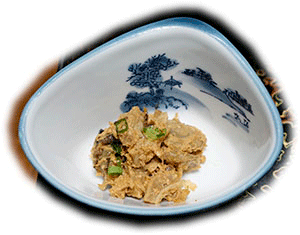
This is a dish in which the liver is ground and added to the boiled Goosefish and mixed with miso and sake to adjust the taste. Later, it was discovered that this Goosefish was special to Kazamaura Village, where the Shimofuro Onsen is located.
Aomori Prefecture has one of the highest catches of Goosefish in Japan, and Kazamaura Village is famous for "empty fishing" where you catch Goosefish with a hook without bait, and gill nets that fix the net to the seabed. .. It is known that Goosefish can be eaten as sashimi because it is caught alive, transferred to a cage and then ikejime. Although the catch is smaller than that of Hachinohe City, which mainly uses bottom trawling, it is traded at a high price because Goosefish is alive, and the average unit price is about twice that of Goosefish caught in Hachinohe City.
Regarding Goosefish sashimi, FISH FOOD TIMES also proposed the following products in No.27 Goosefish's Seven Tools Sashimi (March 2006 issue).
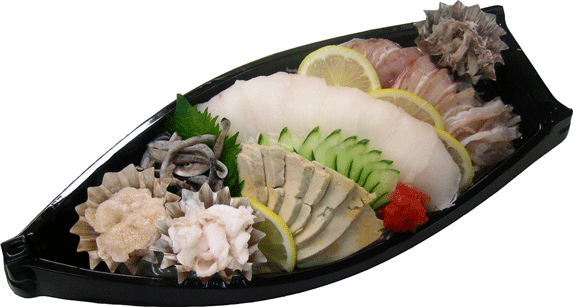
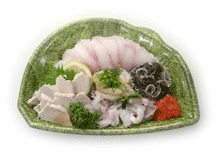
I made this product because I got a live Goosefish from Shimonoseki City, Yamaguchi Prefecture. I'm ashamed to say that I had no knowledge of Goosefish in Kazamaura Village, including at that time. Unfortunately, I couldn't eat Goosefish sashimi this time, but I thought it was good to just eat a dish using fresh Goosefish caught in Kazamaura Village.
Oma bluefin tuna
The next morning, I headed to the famous Oma, which is located about 20km from Shimofuro Onsen. The author was enthusiastic about "I'm going to eat natural bluefin tuna in Oma ..." with a modest breakfast at the hot spring inn.
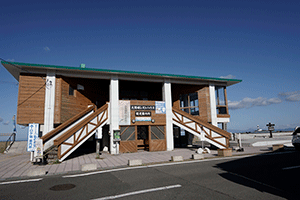
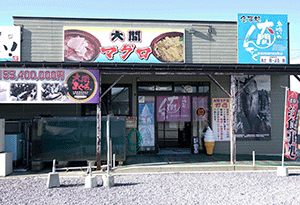
When I arrived at Omazaki, the northernmost point of Honshu, I didn't look at the tourist rest house in the upper left image, and headed for the restaurant in the upper right image on the opposite side. The name of the store is "Fish-eating Omanzoku", and the owner is the captain of the 38th Miyoshi Maru who caught the bluefin tuna that was auctioned off for 155.4 million yen at the first auction in Tsukiji in 2013.
Inside and outside the store, a photograph of 222 kg of fish was proudly displayed, and it was a mechanism to inform that it was "authentic tuna of Oma" even if you hate it.


And this is what I ordered.
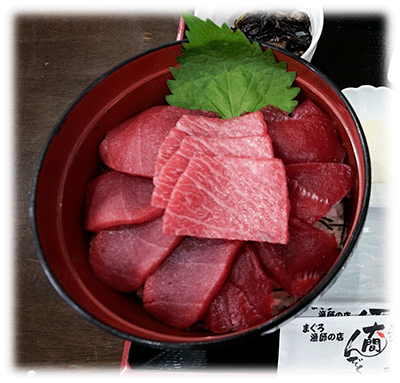
The first customer to enter the store that opened at 8 o'clock, and the one that was brought in at 8:30 was the 3,400 yen "three-colored tuna bowl" using Oma's natural bluefin tuna ootoro, cyutoro, and akami. Of course, it was not raw but thawed tuna, but it was clearly different from the taste of farmed bluefin tuna that I often eat, it was rather refreshing, and the taste with a good aftertaste spread throughout my mouth, and that taste I was able to enjoy it.
To Tsugaru Peninsula
For the time being, the first goal of this time, "Eating Oma's natural bluefin tuna," was achieved, so I decided to drive to the next destination. Next, I decided to use the Mutsuwan Ferry departing from Wakinosawa Port at 10:50 in the morning to cross from the Shimokita Peninsula to the Tsugaru Peninsula. I received an email from the ferry company requesting that I arrive 30 minutes before departure, so I had no time to spare, so I hurried to Wakinosawa Port while repeating the ups and downs of the coastline and mountain roads. So, during that time, I couldn't really enjoy the autumn colors of the Shimokita Peninsula.
The ferry on board was lonely with only 3 rental cars and 8 passengers, and even though the autumn tourist season was in full swing, the influence of the new coronavirus was casting shadows here as well.
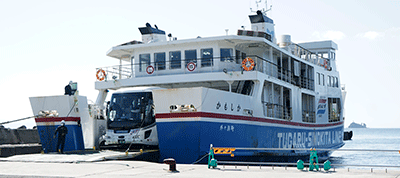
I arrived at Kanita Port in Sotogahama Town on the Tsugaru Peninsula in just one hour. After disembarking, I was looking for a lunch shop while moving toward Hirosaki City, and found "Aomori Niboshi Ramen Kimuraya" in the suburbs of Aomori City, which had moved for about an hour. As a hope, I wanted to eat Tsugaru ramen on the Tsugaru Peninsula, so I entered there without any hesitation.
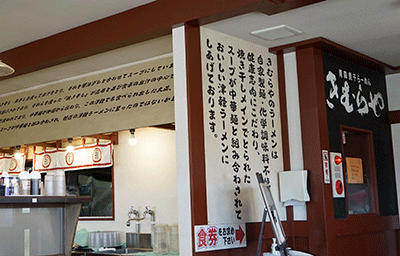
The appealing point of this shop is that it seems to be "no chemical seasoning and homemade noodles", and the soup is taken with grilled niboshi. The author ordered the extreme niboshi ramen (large) 800 yen in the image below. When it was brought in and I drank the soup, the "flavor of sardines shattered and scattered" spread throughout my mouth. I was able to confirm that it was a completely different world from the familiar Hakata Tonkotsu Ramen.

Since this Tsugaru ramen uses a lot of niboshi, I decided to introduce it because I decided that it could be added to one of the themes of the article, "Fish Circumstances".
After eating ramen, it's the way to Hirosaki. Route 280 on the way from Kanita Port, Sotogahama-cho, Higashitsugaru-gun to Hirosaki City is about 20km to Nishitazawa, a suburb of Aomori City. What I found interesting was that the road was really wide and the straight road continued endlessly. While driving a rental car in this laid-back continental landscape, I was reminded of the American freeway I had driven many times before. The road conditions in Aomori seemed to be almost non-narrow wherever I went, and I felt that it was an area where it was easy to drive, without the fussy atmosphere of a foreign country on the continent.
Apple Town Hirosaki City
After passing Aomori City, the next is Hirosaki City. Speaking of Hirosaki, it's an apple, and I'm an apple lover. The dessert for breakfast at home is basically an apple, one for the small size, and one for the large size, cut in half and eaten every day. I also like potato salad with apples, and I also like apple pies very much, so I always ask for apple juice at JAL's in-flight service. The personal computer is, of course, Apple, and has been a heavy user since the days of the PowerPC 7100 and Classic System 7 released in 1994. In October 2009, I also visited Apple's former headquarters in Cupertino, south of San Francisco. I put the Hakata doll otafuku in a large suitcase and carried it to the continental United States. Steve Jobs, who was still alive at the time but was sick and thin, went to visit the illness with the hope that he would return to a plump body. I'm such an enthusiastic Apple believer.
I knew that Apple Town Hirosaki was not a coastline but an inland city, so it was not suitable for fish, but for the reasons mentioned above, I couldn't remove Hirosaki. On this day, I went to a hotel in Hirosaki city while sightseeing in Apple Hill, Hirosaki Castle, etc. on the premise that I could not expect much to be involved in fish.
I arrived at the hotel earlier than planned and was looking forward to the "Shamisen Live" which was the main event of the night, so I made a reservation at "Shamisen Live Aiya" which is about 5 minutes by taxi from the hotel. Arrived just at 19:00. However, there is a "temporary closure" tag at the entrance of the store ...
The online reservation confirmation number was sent by "Gurunavi", and the day before the reservation, I received a confirmation email from Gurunavi. Nevertheless, the store is closed without any notice to the booker. Is there such a thing? If you are going to be closed, you should at least inform the reservation guest about it as a minimum etiquette. However, although I was surprised at this, I couldn't help it anymore, so I had the same taxi return and returned to the hotel.
According to the taxi driver, a cluster occurred at a restaurant in Hirosaki City just a few days ago, and the mayor requested that the restaurant be refrained from doing business. It was said that this was the effect. In other words, there should be few other restaurants that are open, and I was at a loss because I lost the destination of the restaurant that eats dinner. The eating and drinking space of the hotel was closed early, and the Hirosaki Station terminal building, which was a few minutes' walk away, did not seem to be vacant. However, when I walked around the hotel for a while, I found a tavern with glitter and illuminated signs a few minutes from the hotel, so fortunately I entered the store without any hesitation.
The name of the store was "Tsugaru Izakaya Waiwai". It was the last resource as the flow of the day, but it was a level that felt like a hit. The food was quick, the taste was good, there was a lot of alcohol, the price was reasonable, and the result was all right.
When I introduce the food I ordered there,
| Tsugaru Izakaya Waiwai Cuisine | |
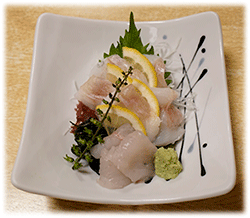 |
 |
| Fat greenling sashimi 750 yen | Sukume (with shark vinegar and miso) 480 yen |
| Sashimi only in northern Aomori | It seems that sharks eat normally in Aomori |
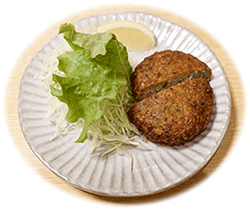 |
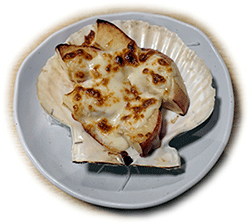 |
| Scallop and squid minced meat cutlet 400 yen | Grilled apple cheese 400 yen |
| This is definitely recommended. Scallops make the taste better | Not a fish, but great for apple lovers |
Lake Towada, Oirase, Hakkoda Mountains
The next day I decided to head towards the mountains instead of the sea. Lake Towada, Oirase Gorge, and Hakkoda Mountains are truly standard sightseeing courses. After all, I visited Aomori prefecture and thought that these places should not be removed, so I enjoyed sightseeing in this area during the best season of autumn.
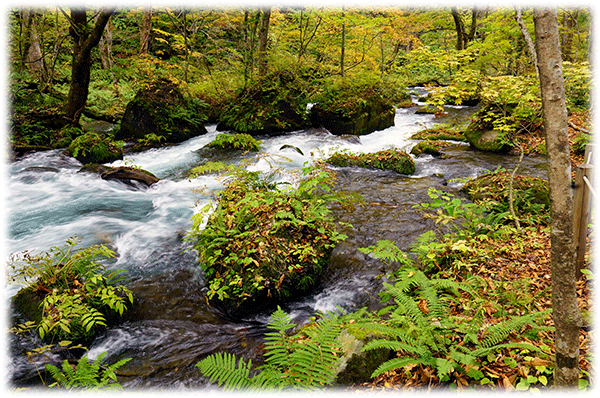
| Oirase Gorge |
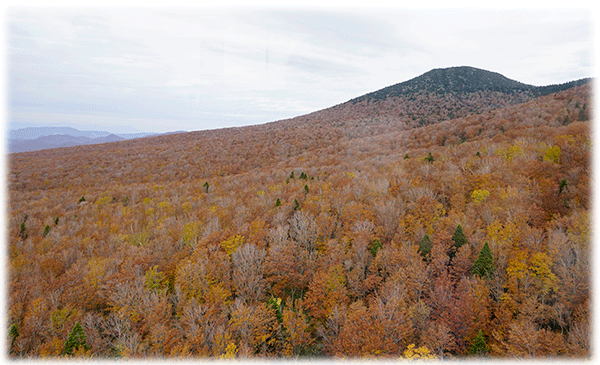
| Hakkoda Mountains |
A resort for the purpose of enjoying the autumn leaves is referred to as "autumn leaves hunting", but the drive to Mt. Hakkoda is not a simple "hunting". I felt that the autumn leaves were in full bloom and I enjoyed the amount of autumn leaves for many years so that the word "take a shower of autumn leaves" was appropriate.
I had lunch on that day at the rest house along the river at the entrance of the Oirase Gorge. And here, too, I ordered the fish dish with the Kokanee salt-grilled set meal in the image below.
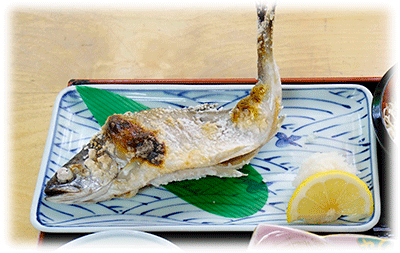
The Oirase Gorge is a section of about 14km of the Oirase River that flows out of Lake Towada, and Lake Towada Himemasu is caught in that lake. Lake Towada is a pure lake with a circumference of 44km and a transparency of 25m, and as the saying goes, "If the water is clean, fish will not live", it seems that it used to be a lake with almost no fish. However, Kokanee eggs are now a specialty of this region because they were successfully cultivated by transplanting Kokanee eggs from Lake Shikotsu in Hokkaido in 1897 and released into Lake Towada.
Kokanee is simply a "sockeye salmon land-sealed type", a fish that stays in lakes and ends its life. On the other hand, the sockeye salmon descends the river and goes out to the sea, so in other words, Kokanee can be described as "lake sockeye salmon".
October 1st is the opening day of fishing for this Lake Towada Kokanee, and the berthing of the group of Kokanee begins from the beginning of October, the peak of fishing is in the middle, and the shadow of the fish becomes thin as early as the end of October. During this time, you can enjoy fishing against the background of the forest where the red foliage of Kokanee, which is colored in bright red, is also red. For fishing enthusiasts, Kokanee fishing on Lake Towada seems to be one of the fishing that you want to try at least once.
By the way, at the breakfast the next morning at Komaki Onsen Aomoriya, where I stayed that night, the char grilled with salt in the image below was served.
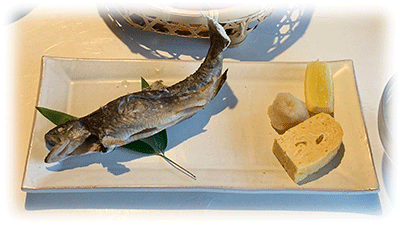
Although char belongs to the same salmonid family as Kokanee, it belongs to Salvelinus unlike Kokanee of Pacific salmon genus, so it should be considered a little different.
When I compared the grilled kokanee and the grilled char and evaluated which one was more delicious, I was able to eat the reasonably priced kokanee grilled with salt for 850 yen, but at Aomoriya's breakfast The char grilled with salt was already cold, and in that respect, Kokanee was definitely better. As for my impressions of Aomoriya's cuisine, I didn't think the cooking level was so good for the high cost of accommodation with breakfast and dinner, and the overall cost performance was a bad impression. There are facilities on the vast site where you can play without any inconvenience, and it may be good to feel like a resort there, but for a person like me who is more interested in the contents of meals, I couldn't give it a high rating.
Hachinohe of fish circumstances
On the last day, I woke up at 4 am and decided to return to the hotel for breakfast and headed for Hachinohe fishing port. This was to check the state of the Hachinohe fishing port and the fish market, where Aomori Prefecture's best fishing base is located.

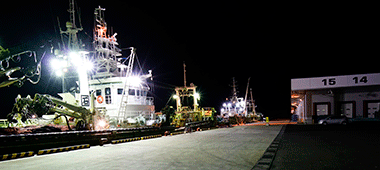
When I arrived at the Hachinohe third fish market, there were some purse seine boats next to the quay, but there was no sign of landing and no sign of people. For this reason, I decided that it would be difficult to see a more lively scene, so I headed to the Hachinohe Municipal Gyosai retail market, which is another destination facility.
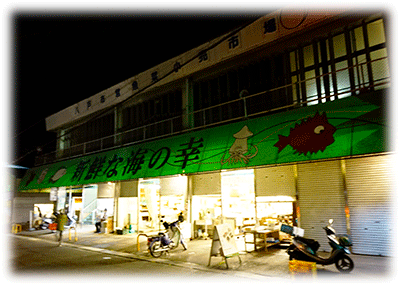
The facility, which was opened in 1953, is open from 3:00 am to 3:00 pm, and is an old-fashioned market centered on fish, which attracts customers from Hachinohe City and surrounding municipalities. Once inside, it was a facility that retains the atmosphere of a very old-fashioned market that is so old that it is rare even if you look at it nationwide.
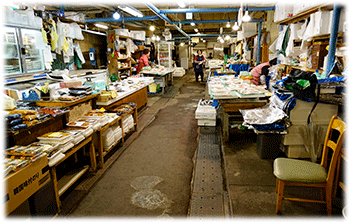

The time was still before 5 o'clock, so the number of customers will increase from now on, but it seemed to be quiet so that I was worried about how many customers would come. It may have been very busy in the past, but now it is left behind by the times, and I felt how long this aging facility would last in the image below. This unique atmosphere reminded me of the Tongchuan Aquatic Market in Shanghai and the Bujeon Market in Busan that I visited in the past.
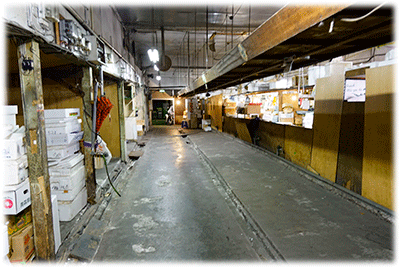
Perhaps in the old days, the stores were lined up side by side, but now there is an aisle that has become a storeroom next to the store that is open. And everywhere in the store, sashimi products are displayed at room temperature as shown in the image below, and I was wondering how much young people would tolerate this hygiene when shopping.
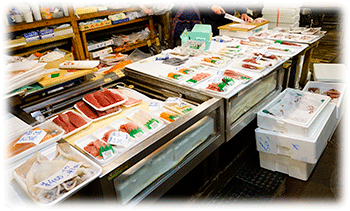
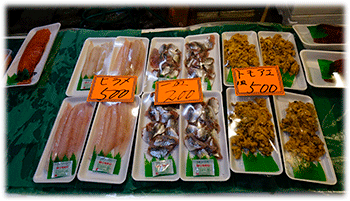
Perhaps the majority of customers are familiar customers of older age groups who have been in the market for decades. If these customers get older and disappear like toothlessness, can the market be a business? On the other hand, even the writer, who is an outsider, was worried about how long the old shopkeepers, who would have been standing in the shop for a long time, could work in the future, considering the future of this market.
As shown in the image below, there were stores in this market that were presumed to be purely business-oriented stores.
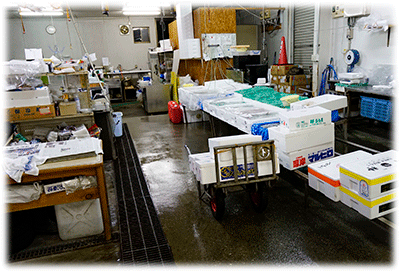
But there were only a few such business-oriented stores in it. The business-oriented stores have changed to be located on the roadside, facing the same road where the market is located, and with easy loading and unloading.
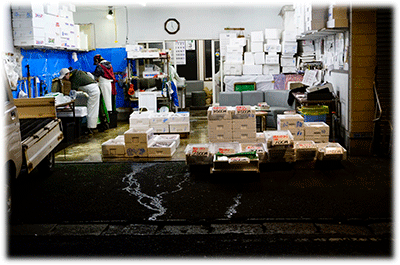
Summary of Aomori fish circumstances
By the way, let's finish the domestic edition of fish circumstances. For four days, Aomori had no time to relax and rushed around the prefecture. I wanted to see more fish, and if possible, on the last day I was planning to buy fresh fish that is rarely available in Fukuoka, but I feel like buying it at the Hachinohe market as well. I couldn't meet the fish.
I have felt this time in Aomori. One of them was that the types of fish sold from eastern Japan to northern Japan, including Tohoku and Hokkaido, were limited compared to western Japan and Kyushu. Even if I wanted to see and eat various kinds of fish, it was not easy and I felt that there were not many places that could meet such expectations.
I also stopped by some fish counters in supermarkets in Aomori prefecture, but none of them had a wide selection of raw fish like the fish counters in supermarkets located in each prefecture from western Japan to Kyushu. As a person in a position like the author, I was just disappointed. However, I always felt this kind of feeling when I visited each prefecture in eastern and northern Japan, so I wasn't too disappointed just to think again, "Is it the same for Aomori?" It's an unknown Aomori, so I had some expectations, so it's a fact that I can't get rid of my disappointment.
One of the things I felt again when I visited Aomori prefecture. It was that fish existed in the form of "small variety and large quantity" from eastern Japan to northern Japan, and that western and southern Japan tended to be "high variety and small quantity".
However, it is basically a trip that only bites the surface of Aomori Prefecture, and there is no doubt that nothing is known about "Aomori fish" in the true sense of the word. To know more deeply, we need a different form of analysis. I would like to think carefully about what I should do to achieve that.
| Please access the following URL if you want to secure using SSL. All pages in the site will be secure pages. |
| https://secure02.blue.shared-server.net/www.fish-food.co.jp/message english 10.2020.html |
An opinion and the communication are to iinfo@fish food times
Date of updating 1 Nov. 2020
